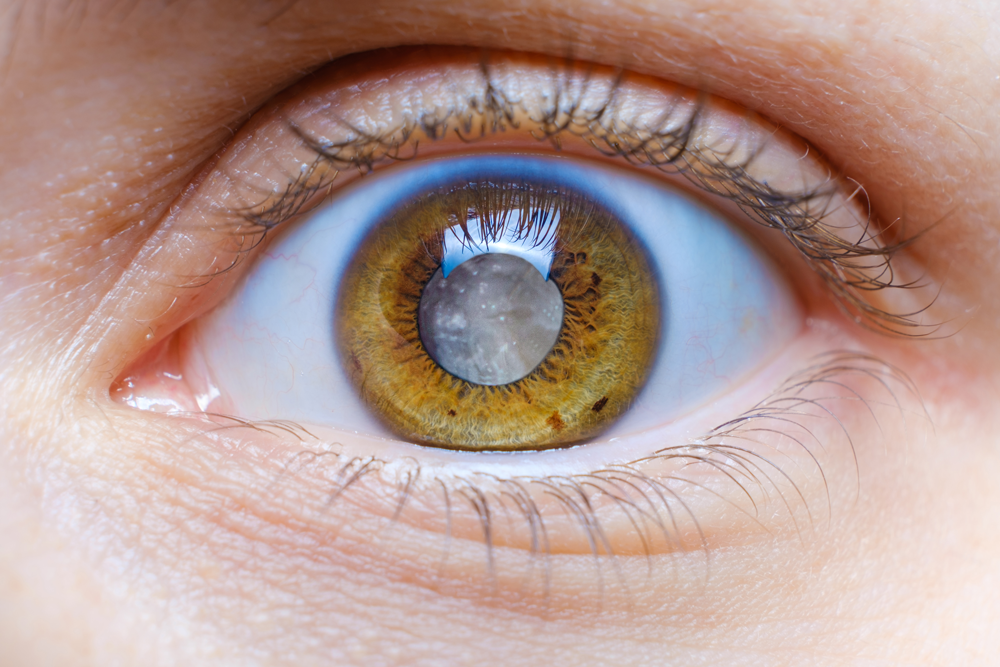Top 5 Symptoms of Cataracts
As we age, the lens of our eye becomes progressively cloudier due to changes in the lens proteins and metabolism. This condition is known as a cataract. Cataracts worsen over time and are the most common cause of visual loss in the world.
Cataract Risk Factors
- Age
- Diabetes
- Smoking
- Eye injuries
- High body mass index (BMI)
- High blood pressure
- Family history
- Prolonged corticosteroid use
Three Types of Cataracts
- Nuclear sclerotic: This type of cataract is the most common. The central portion of the lens (the “nucleus”) becomes yellow or brown in color.
- Cortical cataract: For this type of cataract, the cortex is a softer “shell” outside the nucleus of the lens. It often has a whitish appearance and may form “spokes” similar to a bicycle wheel.
- Posterior subcapsular cataract: This type of cataract is typically the most visually disabling. It consists of opacities of the very back portion of the lens.
Top Five Symptoms of Cataracts
- Blurry vision: Since cataracts typically develop slowly, you might notice your vision is getting gradually worse. Activities and hobbies you normally enjoy such as baiting a fishhook, golfing, bird watching, sewing or reading may become more difficult.
- Difficulty with night vision: People with cataracts often struggle with their night vision due to the cloudy lens scattering light and reducing the amount of light entering the eye. It may become difficult to drive in low light conditions, which can affect Minnesotans with our long winter nights. You may experience glare from headlights and streetlights. Reduced night vision also can lead to nighttime safety hazards like tripping or falling.
- Sensitivity to light and glare: While people who struggle with cataracts may require more light to be able to see, too much light can also cause discomfort. This is particularly true for those who have posterior subcapsular cataracts due to light scatter. They experience discomfort on bright snowy days or glare off a lake on a sunny summer day. Activities such as skiing or boating may become less enjoyable as a result.
- Seeing halos around lights: A common symptom people experience with cataracts is a halo effect around lights. Haloes can be seen around light sources for a variety of reasons including uncorrected refractive errors, dry eye and cataracts. They are caused when the eye fails to focus light correctly.
In the case of cataracts, the cloudiness of the lens is the culprit. It can make nighttime driving difficult and dangerous. It can also affect sports and various activities that require quick visual responses like pickleball.
- Fading or yellowing of colors: As the lens becomes opaque, it often takes on a yellowish hue. This affects a person’s ability to see color normally. This is a gradual process which is why people do not always notice it happening. This diminished color can affect hobbies like hunting, knitting, painting and gardening. It also can cause safety issues, affecting the ability to see traffic lights, dashboard indicators or the doneness or ripeness of foods.
Treatment for Cataracts
If you suspect cataracts are interfering with your ability to perform daily activities or enjoy favorite interests, talk to your eye doctor. Addressing any issues with cataracts can help you maintain a safe, active and fulfilling life. If needed, cataract surgery is a very safe and common procedure typically done in an outpatient setting. Recovery is usually rapid.
